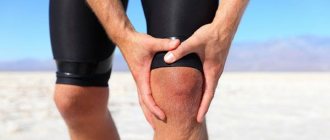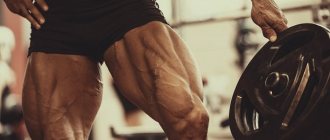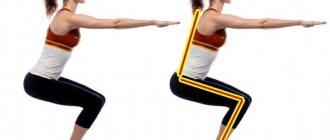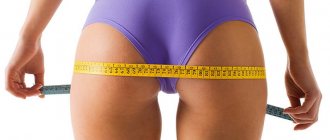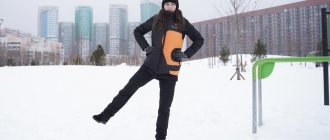Movement is life. You can't argue with that. Avicena said this: “Gymnastics, physical exercise, walking should firmly enter the everyday life of everyone who wants to maintain efficiency, health, a full and joyful life.” But what if every workout is a fight against your own laziness? If you think that it is easier to get sprains or dislocations in sports than the expected benefits and pleasure from the process? Maybe it's all about the warm-up? Most of us perform a set of warm-up exercises to warm up our muscles, taken from school physical education, or neglect them altogether. In both cases we make a mistake.
Why do you need to warm up before training?
Warm-up – exercises to warm up muscles, joints and ligaments, performed at the beginning of any workout. 10 minutes is the optimal time to devote to this. As a result, body temperature and muscle performance will increase, and metabolism will be activated. The body will prepare for higher loads and become less susceptible to injury. This introductory phase of physical activity sets the stage for the main activity, where it will be easier to focus on exercise.
God gave you a body that can handle almost anything! Your task is to convince your mind of this! (Vincent Lombardi)
It doesn’t matter what sport and under what conditions you play. Whether it's a fitness club, a gym, or you have a home gymnastics mat at your disposal. The main thing is to remember that work should be feasible and bring pleasure. And to do this, you should definitely warm up your body first .
The ten-minute rule states that this amount of time per day is enough to keep yourself in good shape and improve your overall well-being. Don’t even think about justifying your laziness by lack of time!
How to warm up correctly?
According to the fitness trainer, there is no warm-up program - all exercises are selected based on the individual characteristics of the body, the type and purpose of the workout.
There are three types of warm-up:
General
- exercises that warm up the entire body as a whole.
Special
- emphasis on a specific muscle group.
Stretching
- helps to achieve greater elasticity and mobility of the body. Stretching is performed before and after training - the exercises differ in dynamics and exposure time.
Olga Andrianova
fitness trainer
It's best to start your workout with cardio equipment - this is one of the most common ways to warm up the entire body. 7-15 minutes of cardio is enough, then move on to warming up the whole body from top to bottom or vice versa. It is very important to perform all movements as smoothly as possible and avoid sudden jerks. Professional athletes, for example, spend about 40 minutes warming up to prevent injuries associated with a “cold” body.
Features of a warm-up to warm up muscles
A set of warm-up exercises should consist of two parts: general and special. General warming up speeds up the functioning of the cardiovascular and respiratory systems. The muscles are saturated with oxygen, which makes them stronger. Special warm-up exercises prepare specific muscle groups for stress.
Even if the main goal of the exercise is to work only with a specific muscle group, do not ignore the overall complex. Always start there and then pay more attention to the target areas.
Here's how to warm up before your workout.
Warm-up exercises before training are performed one after another without breaks, on average for 15-30 seconds each. Try to maintain symmetry and warm up the right and left sides equally well. Make all rotational movements in both directions.
Stretching is not recommended at this stage . It will negatively affect strength performance and can lead to injury. But it will be an excellent finale to the workout, when the blood flow to the muscles is maximum.
If after the gym you don’t have the strength for any mental work or even calm chatting, then this is not fatigue, but overwork. Such overloads do not benefit your body.
The set of warm-up exercises should be simple, but capable of significantly increasing the frequency of cardiovascular contractions. These can be the following types of physical activity :
- Riding a bicycle (regular or stationary). Besides being a good warm-up, it's a great lung workout. The elasticity of the diaphragm increases, sighs become deeper, and the respiratory system as a whole is strengthened.
- Running (outdoors or indoors on the spot). Doing it correctly should allow you to talk without getting out of breath in the process.
- Walking with light stretches. It stimulates blood circulation just as well as jogging and replenishes your energy level. Why not?
- Jumping rope. This sports equipment involves a huge number of muscles: the abs, arms, legs and buttocks. It is also the best remedy for beautiful posture.
- A variety of exercises to warm up your legs, arms, and torso before training.
- Rotation of all joints (from interphalangeal to ankle) to increase body flexibility.
Interesting fact! Regular fitness classes develop the body's habit of burning fat. And this happens even when you missed a workout.
Start exercising at a slow pace, gradually increasing the speed and intensity of the work. The first sweat on your body will indicate that your work is sufficiently effective. Now the body is ready for stress.
Start your main workout 3-5 minutes after warming up.
General warm-up - remembering physical education lessons
In the general warm-up, the following components are required:
- aerobic exercise;
- joint gymnastics;
- prestretching.
A general warm-up is mandatory and simply necessary before starting any workout. Its main tasks are:
- improving the functioning and mobility of the joint-ligamentous apparatus;
- increasing the elasticity of ligaments and muscles;
- saturation of muscles with blood and oxygen;
- increased heart rate and dilation of capillaries;
- increased body temperature;
- release of adrenaline into the blood;
- launching the mechanism of neuromuscular regulation;
- concentration on upcoming loads.
All these factors affect the quality and result of training, the productivity of loads, and most importantly, they prevent or minimize the risk of injury and disease. Warm-up should not lead to fatigue, just “warm up” the body before training. Now let's talk in more detail about the components of the warm-up.
A set of exercises for warming up
Start in a standing position. Place your feet shoulder-width apart, feet parallel to each other along the outer lines. The tailbone is slightly directed forward.
| Shoulders. Begin to rotate your shoulders back with full force. Finally, take a few deep breaths through your nose, slowly raising your arms to the sides to a diagonal. As you lower your arms, exhale through your mouth. |
| Neck. Tilt your head towards your shoulders alternately without sudden movements. There should be no pain. Please note that the task is not to bend the neck, but to stretch this part of the spine. Stretch your left ear upward as you bend to the right, and vice versa. The tilt occurs at approximately an angle of 45° from the axis of the spine, the crown tends to diagonally, the back is straight. Then turn your head to the sides. After this, draw a semicircle with your chin on your chest from shoulder to shoulder. |
| Wrists. Inhale as you raise your arms to your sides. Then lower them parallel to the floor and work your wrists in a circle back and forth (15-20 seconds each). |
| Elbows. Spread your arms to the sides and form fists. Rotate your elbows first with your forearms toward you, then away from you. |
| Lateral bends. Place your feet slightly wider than shoulder-width apart, parallel to each other along the outer lines. As you inhale, move your body to the left and your hips to the right. As you exhale, return to the starting position. Then, without stopping, the body goes to the right and the hips to the left. Hands slide along the sides of the legs. |
| Bend forward. Place your legs wide, feet parallel to each other. As you inhale, bend your torso, stretching your arms forward until they are parallel to the floor. As you exhale, “grow” to the starting position. In this case, the back is straight, the top of the head tends forward, and the tailbone moves back when you bend in an “L” shape. After several repetitions, hold the bending position. Slowly lower your hands to the floor (shoulder-width apart) and begin the next exercise. |
| Mill. You have locked into the desired position, having completed the previous exercise. If necessary, spread your legs wider, point your toes forward, and point your hands under your shoulders. As you inhale, raise your arms up one at a time, rotating your body behind them. As you open up, look up at the ceiling. After several repetitions, collect your legs and slowly lift your body, rounding your back vertebra by vertebra. |
| Table pose. Get on all fours. As you exhale, raise your legs one at a time until they are parallel to the floor, pointing your toes down. At the same time, stretch your opposite arms forward (right leg - left arm) without bending in the lower back. |
| Squats. Feet hip-width apart. As you inhale, move your pelvis back, raising your arms diagonally, aiming the top of your head in the same direction. As you exhale, rise. Each time we try to sit deeper, but make sure that our knees do not protrude beyond our toes. |
| Jumping Jack. Place your feet together or slightly apart. Exhale and jump up, spreading your legs wider than your hips and raising your arms to the sides above your head. The jumps are soft on the toes, the abdominal muscles are tense, the elbows and knees are slightly bent. |
Dynamic stretching
Pre-stretching should never be chaotic. It is enough to perform several dynamic exercises to stretch the muscles of the entire body. The most common are bending to the side, bending forward on straight legs, rolling from foot to foot in a wide squat, and springing movements in a lunge position.
In general, the warm-up should be within the range of 12-15 minutes. You shouldn’t drag it out, and you shouldn’t get carried away with the number of exercises, intensity and rest between approaches in the warm-up.
How to do cardio
This is an easy activity - about 60% of maximum effort - that will work several muscle groups at once.
Light jogging on the treadmill or working on other cardio equipment: rowing, elliptical, airbike (looks like a bicycle, but with handles, so you move both your legs and arms) is ideal.
Work at a conversational pace so that you can carry on a conversation during the activity without getting out of breath.
If you don't have exercise equipment and don't have enough room to run, try jumping rope or Jumping Jacks. They are also great for warming up the body. Do five intervals of this type of work: jump for 40 seconds, rest for 20 seconds.
Lack of warm-up is the most common mistake
Why do most people neglect warming up? Most likely, without realizing its importance and necessity. At the beginning of a workout, an unheated body experiences an abrupt load, which is perceived by all systems as stress. Cold ligaments are more susceptible to sprains and tears, articular cartilage wears out quickly, and muscles are not elastic. Unpreparedness of the cardiovascular system for the upcoming training over time leads to hypertrophy of one of the chambers of the heart, and also causes the development of tachycardia. Therefore, you should not save time, be embarrassed, or consider warm-up exercises banal and boring. The main rule of warming up is not to turn it into a workout. And don't forget about the cool-down at the end of your workout!
And in conclusion, video instructions from Yaroslav Brin:
Leg exercises
- Straightening the legs in a standing position. The left hand is placed on the belt, the right is used to maintain balance. You should straighten your left leg forward, raising it as high as possible. Then the same is repeated for the right leg. In this case, you should maintain tension on the supporting leg.
- Dive. Place your hands on the floor with both hands, left foot on the floor. Raise your right leg back, bending it at the knee. Then bend and straighten your left leg. The left foot is kept flat on the floor. Then you should change legs and repeat.
Breathing exercises
- Breath of the sun. While inhaling, you should stretch your whole body upward, and while exhaling, return to the starting position. Repeat 8 times.
- Moon extension. Place your right hand on your belt, pull your left hand up and, as you exhale, bend to the right. Repeat on the other side. Perform the exercise 8 times left and right.
- Dolphin. While inhaling, spread your arms to the sides, while exhaling, bring them together in front of you, tilt your head and stretch forward.
Exercises for the torso muscles
- Tilts. The hands are connected above the head. Bend from side to side, keeping the pelvic girdle motionless.
Warm-up the lower back If you are concerned about complications in the lower part of the spine, then such exercises should be avoided.
- Bend forward. The legs are placed in the same way. Lower your chin to your chest and gradually bend down as low as possible, then also straighten up and without changing the position of your feet, turn your torso to the left and repeat the bend. Repeat in the same way on the right side.
Warm-up approach and warm-up before aerobic training
As for the special warm-up, everything is individual. A warm-up approach can be a light weight approach, for example, when bench pressing dumbbells. The exercise is performed with light weight, for one set of 15 repetitions. The purpose of this warm-up approach is to establish neuromuscular and intermuscular coordination, mental adjustment and concentration before the working approach.
A football player’s warm-up before a game or training can be special, and an additional set of warm-up exercises must be performed before running. When running, a lot of stress is placed on the knees, ankles and lumbar spine. Therefore, it is very important to pay attention to preparing for training these particular parts of the body. In addition to the above-described rotational exercises for the lower extremities and bending, the warm-up should include walking with a gradual increase in tempo for a couple of minutes, and in parallel with walking, perform swinging movements with your arms. Next, it is advisable to do a short jog, with high knees, then perform a couple of sets of squats, with 15-20 repetitions.
Unlike warming up before strength training, you should not do stretching exercises (pre-stretching) before jogging, as this can destabilize the joints and lead to injury. If you have to run short distances, then you need to perform several additional approaches to explosive muscle strength - jumping from a squat position.
Warm up the pelvic girdle
- Mahi. While maintaining balance with your right hand, swing your left leg forward and backward. After performing the swings several times, do the same to the left side. Then change legs and repeat everything for the right leg.
- Lunges. Legs to the sides, hands on the belt. Make a deep lunge, first in one direction, then in the other direction. The feet do not leave the floor and the torso does not lean forward.
Preparation for jumping
To prepare your body for jumping, you need to do jumping exercises, starting with small jumps and ending with large ones. It is worth including acrobatics in your warm-up to develop coordination. For example: forward flips, backward flips, cartwheel, barrel roll, somersaults, chené, crossover, rolls. And also be sure to go through all the elements of the exercises. Practice balances, static and dynamic. In order to easily perform static elements in an exercise, you need to include these elements in your warm-up and perform them for as long as possible. For example, time a stopwatch and stand in balance for 1-2 minutes. Now you are ready to exercise to music.
How to prepare muscles for training
Before any rhythmic gymnastics training, it is necessary to warm up, consisting of a set of exercises.
By gradually warming up the muscles, the body prepares for the load. By warming up, you warm up your muscles, ligaments and tendons - this improves their elasticity and reduces the risk of injuries and sprains. Warming up before exercise helps improve blood circulation in the body, which helps supply your muscles with oxygen and nutrients. This will help increase your stamina.
Stretching in rhythmic gymnastics is mandatory on 2 legs






